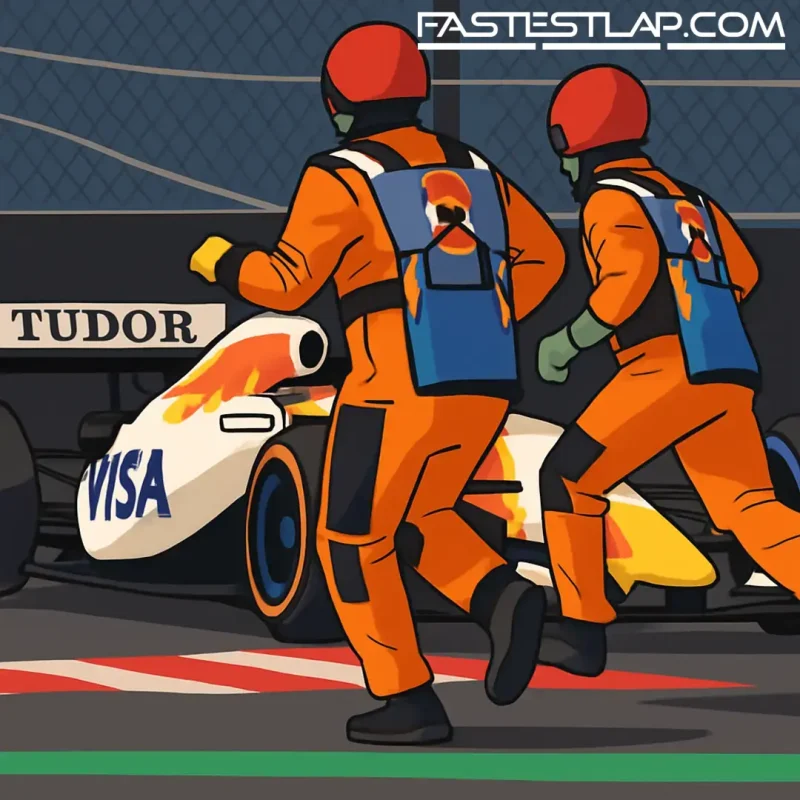Liam Lawson had a heart‑stopping near-miss with two marshals at the Mexico City Grand Prix — and it didn’t make the world feed.
The Racing Bulls rookie came out of the pits on fresh hards and arrived at Turn 1 to find two marshals sprinting across the live track. Lawson jinked, lifted, and missed them by a blink. Then the radio rage kicked in.
“Oh my God, are you kidding me… I could have f***ing killed them,” Lawson told race engineer Ernesto Desiderio, who replied he’d seen it too. The footage surfaced online after the race, prompting immediate questions over how marshals ended up in harm’s way so early in a Grand Prix.
Lawson, who later retired with damage from an earlier tangle involving Carlos Sainz’s Williams, didn’t sugarcoat it when he faced the media.
“I honestly couldn’t believe what I was seeing,” he said. “Boxed, came out on a new set of hards, got to Turn 1 and there were two dudes running across the track. I nearly hit one of them. It was so dangerous. I’ve never experienced that before. It’s pretty unacceptable.”
Racing Bulls wanted answers. The FIA moved quickly to provide the first version of events.
“Following a Turn 1 incident, Race Control was informed that debris was present on the track at the apex of that corner,” read an FIA statement. “On lap 3, marshals were alerted and placed on standby to enter the track and recover the debris once all cars had passed Turn 1. As soon as it became apparent that Lawson had pitted, the instructions to dispatch marshals were rescinded, and a double yellow flag was shown in that area. We are still investigating what occurred after that point.”
The governing body also stressed its respect for OMDAI (Mexico’s ASN) and the Autódromo Hermanos Rodríguez volunteer corps, calling their “professionalism and dedication” invaluable to the sport. That nod matters. F1 runs on volunteers at most tracks, and they’re usually excellent. The issue here is process — the exact timing of when “standby” turned into “go,” and why that didn’t match the on-track reality as Lawson rejoined.
Zoom in on the timeline and you get a worrying picture. Double yellows were showing — a clear warning to slow and be ready to stop — but Lawson was still at racing speed on pit exit before Turn 1, and the marshals, for whatever reason, were already crossing. That’s a system failure, whether in communication from Race Control, local instruction, or a simple misread. Lawson’s reactions prevented a disaster. A driver shouldn’t be put in that position.
“It really can’t happen again,” Lawson said. “I’m sure we’ll get an explanation, but we can’t understand how marshals are allowed to run across a live track like that.”
The incident overshadowed what was already a bruising afternoon for the New Zealander. His race was compromised by that early contact with Sainz’s Williams, damage eventually forcing the Racing Bull to the garage. Even so, the biggest talking point after the flag was safety. Drivers trust the system: the flags, the radio messages, the choreography of recoveries. When that trust wobbles, everyone feels it.
For the FIA, the immediate task is straightforward: nail down the chain of events, identify the misstep, and publish a clear fix. Whether that’s a tweak to Race Control protocols, a refresh of marshal briefing procedures, or a tighter lock on when a track is considered “live,” the takeaway should be visible and prompt.
Mexico City brought the heat in the grandstands; it didn’t need a scare on the asphalt. Thanks to Lawson’s quick hands and cooler head than his radio suggested, we’re talking about procedure rather than tragedy. That’s the only acceptable outcome now — swift clarity, and a guarantee it stays that way.




